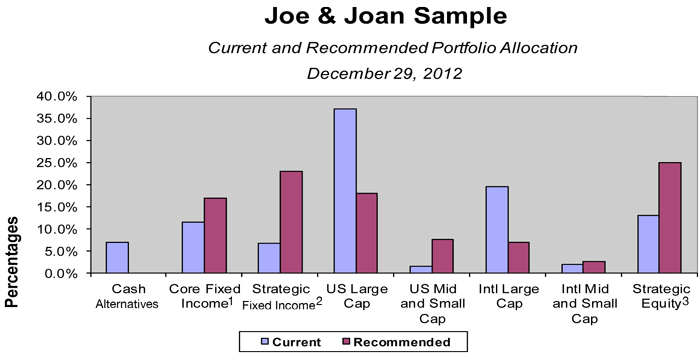After a debt-ceiling reprieve, the US government’s next big hurdle is the March 1st Sequester. What is sequestration and how does it affect you?
During the debt ceiling showdown in the summer of 2011, a group of arbitrary across-the-board spending cuts deemed unacceptable to both Democrats and Republicans was drafted to ensure action on deficit reduction. It wasn’t a solution, it was just a way to buy time and it’s called a sequester. Through a series of compromises, the deadline for the sequester has been moved to March 1, 2013 and separated from other components of the “fiscal cliff”.
When totaled, the sequester’s automatic spending cuts reduce government spending in 2013 by $85 billion (source: JP Morgan Market Bulletin, 2/19/13). Here’s a breakdown of cuts mapped out in the legislation through 2021.
What does the sequester mean to you as a citizen and investor?
Fiscal drag.The Congressional Budget Office estimates the initial impact to GDP in 2013 of around 0.56% if the sequester lasts from March through the end of the year (source: Washington Post, “The Sequester”, 2/20/2013). This could mean uneasy stock markets, less hiring, and more muted recovery.
Arbitrary cuts. The punitive nature of across the board cuts may have an impact for you in other ways. Those most affected probably work within the government. Some could lose their jobs and those that don’t could find themselves working in a very constricted environment. For the average citizen, daily encounters with the government may be slowed or changed. Some examples? Fewer food safety inspections, flight back-ups due to cuts at the FAA, slower federal court systems with lighter dockets meaning delays to cases, cuts to federally-funded scientific research, defense contracts, and reduced military benefits.
Market disruption.The idea of a sequester is popular with almost no one. This could translate into less confidence in stock markets and increased volatility. In the longer term, the failure to address debt and deficit issues could have even larger implications.
We can’t predict how everything relating to a spending sequester will fall out. Markets so far this year have turned the other cheek whether from fatigue with politically-inspired deadline drama or positive reaction to other news. We’ll keep you posted as Capitol Hill sorts things out in the coming weeks and months.
Required Disclaimer: The information has been obtained from sources considered to be reliable, but we do not guarantee that the foregoing material is accurate or complete. Any information is not a complete summary or statement of all available data necessary for making an investment decision and does not constitute a recommendation. Any opinions are those of Melissa Joy, CFP® and not necessarily those of RJFS or Raymond James.




















